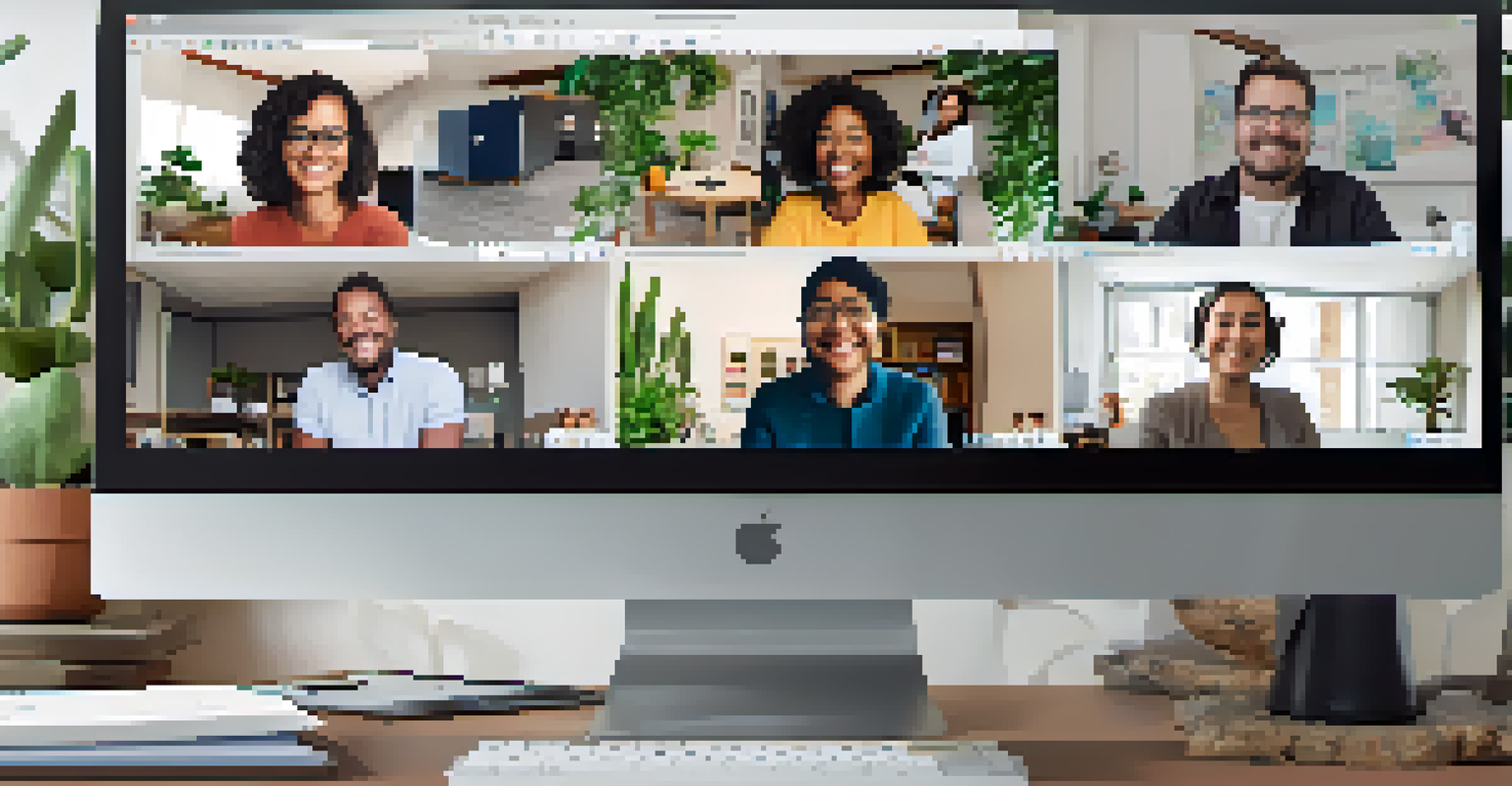Designing Inclusive Group Projects with Technology

Understanding Inclusivity in Group Projects
Inclusivity in group projects means ensuring that all participants feel valued and can contribute meaningfully. This concept goes beyond just accommodating diverse abilities; it also embraces various learning styles, cultural backgrounds, and perspectives. By fostering an inclusive environment, we not only enhance collaboration but also enrich the learning experience for everyone involved.
Diversity is not about how we differ. Diversity is about embracing one another’s uniqueness.
In practical terms, inclusivity can be achieved through thoughtful planning and open communication. When project leaders take time to understand the needs and strengths of their team members, they create a supportive space where ideas can flourish. This approach not only helps in achieving better outcomes but also builds stronger relationships among team members.
For instance, consider a group project that involves both visual and auditory learners. By incorporating different methods, such as videos, infographics, and discussions, all members can engage in ways that resonate with them. This kind of consideration is key to designing projects that cater to a diverse group.
The Role of Technology in Fostering Inclusivity
Technology plays a crucial role in making group projects more inclusive. Tools like collaborative platforms and communication apps allow team members to connect and contribute regardless of their location or time zone. This flexibility is especially beneficial for those who may face challenges in traditional classroom settings.

Additionally, technology can provide various modes of communication, such as text, audio, and video, catering to different preferences and needs. For example, team members who may struggle with verbal communication can express their ideas through written messages or visual presentations. This versatility empowers everyone to participate fully.
Inclusivity Enhances Team Collaboration
Creating an inclusive environment allows all participants to feel valued and contribute meaningfully, leading to better collaboration and enriched learning experiences.
Moreover, using assistive technologies can further enhance inclusivity. Tools like screen readers or speech-to-text software can help individuals with disabilities engage more effectively in group discussions and tasks. By embracing these technologies, we create an environment where everyone has the opportunity to shine.
Creating a Collaborative Online Workspace
A well-designed collaborative online workspace can significantly enhance the inclusivity of group projects. Platforms like Google Workspace or Microsoft Teams allow team members to share documents, brainstorm ideas, and communicate seamlessly. This centralization of resources helps everyone stay on the same page, reducing the risk of miscommunication.
Inclusivity means not just 'we're allowed to be there,' but 'we're valued' and 'we're included.'
When setting up an online workspace, it's important to consider user accessibility. Ensure that the tools used are easy to navigate and compatible with various devices. Providing resources like tutorials or guides can also help team members feel more comfortable using the technology, especially if they're unfamiliar with it.
Encouraging regular check-ins and feedback sessions within the workspace can further promote inclusivity. By creating a culture of open communication, team members can voice concerns, suggest improvements, and celebrate successes together. This sense of community is vital for maintaining motivation and engagement throughout the project.
Establishing Clear Roles and Responsibilities
Clearly defined roles and responsibilities are essential for the success of inclusive group projects. When team members understand what is expected of them, they can contribute more effectively and take ownership of their tasks. This clarity helps prevent confusion and ensures that everyone is on the same wavelength.
To establish these roles, project leaders can facilitate discussions that allow team members to express their strengths and preferences. By aligning tasks with individual skills, the group can work more efficiently and productively. For instance, a member who excels in research might take the lead on gathering information, while another who is a strong communicator could handle presentations.
Technology Supports Inclusive Projects
Utilizing collaborative tools and assistive technologies enables team members to connect and communicate effectively, regardless of their location or individual needs.
Regularly revisiting and adjusting roles as the project progresses is also important. As team dynamics evolve, some members may discover new strengths or interests that could benefit the project. An adaptable approach to roles fosters a collaborative spirit and encourages ongoing engagement among all team members.
Encouraging Open Communication and Feedback
Open communication is the backbone of any successful group project, especially in an inclusive environment. Creating channels for feedback and discussion enables team members to express their thoughts and concerns freely. This transparency fosters trust and ensures that everyone feels heard and valued.
One effective way to encourage communication is by implementing regular check-ins. These can be brief meetings or online discussions where team members share updates, challenges, and insights. This practice not only keeps everyone informed but also promotes accountability and collaboration.
Furthermore, providing constructive feedback is essential for growth. Encouraging team members to share positive reinforcement along with suggestions for improvement creates a supportive atmosphere. When people feel safe to voice their opinions, they're more likely to engage actively and invest in the project's success.
Incorporating Diverse Perspectives in Project Design
Incorporating diverse perspectives into project design can lead to more innovative and effective outcomes. When team members bring different viewpoints and experiences to the table, they enrich the problem-solving process and foster creativity. This diversity can be particularly beneficial in projects that require critical thinking and collaboration.
One way to ensure diverse perspectives is to intentionally include team members from various backgrounds and experiences. This might mean inviting individuals from different cultural, educational, or professional backgrounds. By valuing these differences, the group can approach challenges with a broader understanding and generate more well-rounded solutions.
Diverse Perspectives Drive Innovation
Incorporating diverse viewpoints in project design fosters creativity and leads to more effective problem-solving, ultimately enhancing project outcomes.
Moreover, encouraging brainstorming sessions where all ideas are welcome can lead to unexpected breakthroughs. Creating a safe space for team members to share their thoughts without fear of judgment or rejection is key. This openness not only enhances project quality but also strengthens team bonds and fosters a culture of inclusion.
Evaluating Project Outcomes for Continuous Improvement
Evaluating project outcomes is vital for understanding the effectiveness of inclusivity measures and for planning future group projects. This evaluation process should be collaborative, inviting input from all team members about what worked well and what could be improved. This reflection helps identify strengths and weaknesses in the approach to inclusivity.
Using tools like surveys or discussion sessions can facilitate this evaluation. Team members can share their experiences and suggest changes that could enhance inclusivity in future projects. By analyzing feedback and outcomes, project leaders can make informed decisions on how to improve the process moving forward.

Additionally, documenting lessons learned can serve as a valuable resource for future projects. This not only helps the current team but also provides insights for others who may be embarking on similar initiatives. Continuous improvement is a journey, and every project is an opportunity to refine our approach to inclusivity.